When it comes to city passes and travel cards, it’s usually fairly easy to figure out whether they would be worth it for you or not. For things like the Paris Pass or London Pass, they have a list of the most popular attractions and how much they cost, right there for you to see. The Swiss Travel Pass, however, is shrouded in mystery, or at least it was until I spent several days tracking down all of the prices and benefits.
A great many of the visitors and commenters on my popular page about where to go in Switzerland on a short visit are wondering whether the Swiss Travel Pass is a good deal. Embarrassingly, I’ve always had to answer that I found the pass too confusing to confidently advise people on. Now that has all changed, after literally days of research.
Note: This article was last updated in February, 2024.
Disclosure: This is a reader-supported website and some of the links are affiliate links where a small commission is paid to help keep this site going, but the cost to visitors is the same. The Swiss Travel Pass seems quite expensive at first, so it felt like it might be hard to get your money’s worth out of it. As it turns out, it’s pretty easy to get good value, and it’ll be a good deal for many visitors.
New in 2024
Prices increased an average of 5.9% from 2023 on the Swiss Travel Passes, but the Half Fare Card remains at CHF120, which is where it’s been for many years. Train fares in the country increased by similar percentages so the value is basically unchanged. There were no other notable changes to service or the included attractions and train routes.
>>>Buy the Swiss Travel Pass online
Where to stay in Interlaken and the Lauterbrunnen Valley
Since most people reading this will be visiting the Interlaken area and I get so many questions about it, I decided to write a detailed guide on which area to stay in while visiting this area.
>>>Where to stay in Interlaken or the Lauterbrunnen Valley in Switzerland
I included many huge photos in that post so readers will be able to get a better idea of what each place looks like and they are worth a look by itself.
>>>Lucerne or Interlaken: Which to visit and how long to stay?
The article just above will help you decide on how long to spend in each of Switzerland’s two best tourist areas.
Are you 100% sure where you want to go in Switzerland? This should help
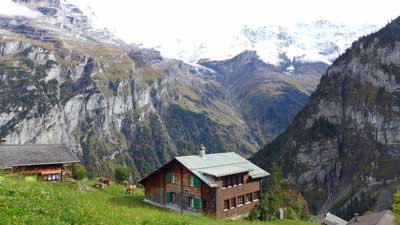
Zurich and Geneva are pleasant but dull. The good news is that Switzerland is packed with amazing sights and none of them are the big cities. If you aren’t 100% locked in yet, please read the article below and I think you’ll enjoy it.
Is the Swiss Travel Pass a good deal? Here's the short version

The bottom line is that the scenery, train journeys, and cable car rides in Switzerland are stunning and not found anywhere else in the world. They are also quite expensive if you pay for them one at a time. So no matter how you visit Switzerland, you are going to be paying quite a bit, or skipping the absolute best things that you’ve come there to see.
With good planning it’s quite easy to get great value out of a Swiss Travel Pass, but it might be a poor choice for those who don’t like to plan ahead. You can easily do a scenic train ride and a cable car in the same day, and still have time to do a scenic hike in the process.
First class or second class? Good news for most people
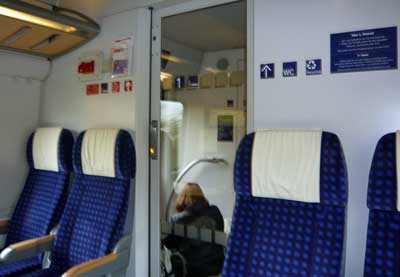
That said, Swiss Trains are literally the nicest in Europe and even the Second Class seats and carriages are nicer and roomier than trains in neighboring countries. The First Class seats are larger and nicer with only 3 across the cabin instead of 4, but honestly Second Class is perfectly comfortable for almost everyone.
Again, First Class on European trains like this is generally popular with business travelers where the company is paying and they need to get work done during the ride, and also senior citizens who don’t want to worry about a carriage full of backpackers. For most of the rest of us, Second Class is more than comfortable enough and the seat width and legroom compare to business-class airline seats. I’m a big and tall guy and I almost always travel in Second because it’s plenty comfortable enough and all the seats arrive at the same time anyway.
The longer you'll be in Switzerland, the better deal a Swiss Travel Pass will be
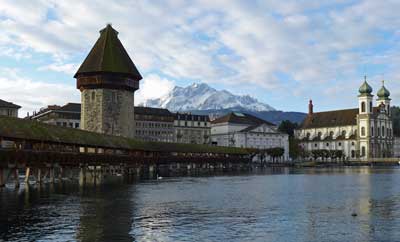
In other words, if you are staying 5 days or fewer, you have to do the math to determine your best option. But if you are spending even 6 or 7 days in Switzerland then the 6-day or 8-day Pass is almost guaranteed to be a great deal and your best choice. Once you have a Swiss Travel Pass you’ll absolutely love the ability to just hop on any train (excellent trains, always on time) and most boats and cable cars without having to worry about the cost. The per-day cost of an 8-day Pass even if you only use 6 of those days is about CHF65, and Switzerland is filled with amazing train rides and boats and cable cars that can get you that much value before noon each day.
Schilthorn (50% discount) and Jungfraujoch (25% discount) are cheaper with a Swiss Travel Pass
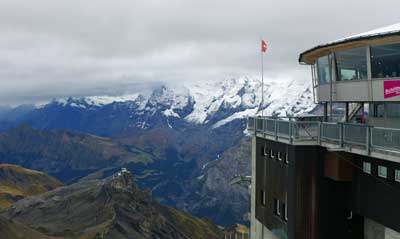
Both of those peak experiences are extraordinary and different from each other. Even so, compared to Jungfraujoch, Schilthorn is also faster and more comfortable on the way up and down. You can enjoy an excellent visit to Schilthorn in 4 hours or so (or a bit longer if you eat at the spinning Piz Gloria restaurant at the top), while a visit to Jungfraujoch requires closer to 6 hours.
NOTE: Schilthorn closes for maintenance for a week or two in late November most years.
Consider the Swiss Half-Fare Card instead
If you AREN’T going to be doing two or more of the long (and expensive) scenic train trips, you will get much better value out of the Swiss Half-Fare Card, which is explained a bit below.
Mt Rigi, near Lucerne, is 100% covered by the Swiss Travel Pass
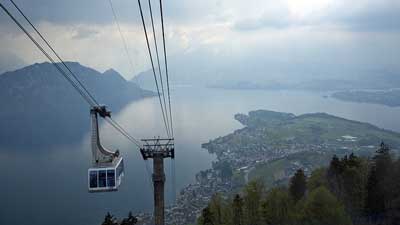
Is a Swiss Travel Pass right for you?
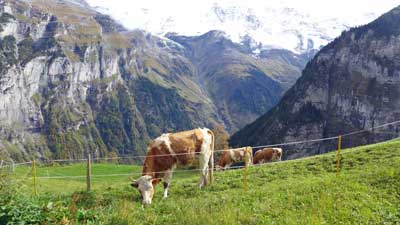
Most people only visit Switzerland for 5 or 6 days at most, so the 3-day and 4-day passes are the ones to focus on. But if you are staying for 8 days or more, those longer passes are almost certainly a great deal for you.
Long story short, if you plan on doing 2 of the more expensive scenic trains and the Jungfraujoch railway or the Schilthorn cable car, then the pass will save you money. Switzerland is expensive, but it’s worth it, and the travel pass can help make it a bit more affordable.
What the Swiss Travel Pass includes
- Free rail travel on normal trains and most scenic trains
- Discounted travel (about 50%) on popular tourist mountain trains
- Discounted travel (about 50%) on popular tourist cable cars
- Free travel on public transport in 75 towns and cities
- Free entry to around 500 museums in Switzerland
The Swiss Travel Pass covers the fare on the most popular scenic and panoramic trains. You can choose a normal seat in a regular carriage for no additional cost, but there is a supplement of CHF8 to CHF49 for a reserved seat in one of the special panorama carriages on these routes.
Prices of the 2024 Swiss Travel Pass
1st Class
- Adult 3-day Pass: CHF389
- Youth (4 to 25) 3-day Pass: 274
- Adult 4-day Pass: 469
- Youth (4 to 25) 4-day Pass: 330
- Adult 6-day Pass: 602
- Youth (4 to 25) 6-day Pass: 424
- Adult 8-day Pass: 655
- Youth (4 to 25) 8-day Pass: 469
- Adult 15-day Pass: 723
- Youth (4 to 25) 15-day Pass: 512
2nd Class
- Adult 3-day Pass: CHF244
- Youth (4 to 25) 3-day Pass: 172
- Adult 4-day Pass: 295
- Youth (16 to 25) 4-day Pass: 209
- Adult 6-day Pass: 379
- Youth (16 to 25) 6-day Pass: 268
- Adult 8-day Pass: 419
- Youth (16 to 25) 8-day Pass: 297
- Adult 15-day Pass: 459
- Youth (16 to 25) 15-day Pass: 328
Swiss Travel Pass Flex
This version costs a bit more, but you don’t have to use the travel days consecutively. It’s a great option for anyone who won’t be taking longer train rides each day.
- Adult 3 Flex days in 1 month (1st Class): CHF445
- Adult 3 Flex days in 1 month (2nd Class): 279
- Adult 4 Flex days in 1 month (1st Class): 539
- Adult 4 Flex days in 1 month (2nd Class): 339
- Adult 6 Flex days in 1 month (1st Class): 644
- Adult 6 Flex days in 1 month (2nd Class): 405
- Adult 8 Flex days in 1 month (1st Class): 697
- Adult 8 Flex days in 1 month (2nd Class): 439
- Adult 15 Flex days in 1 month (1st Class): 755
- Adult 15 Flex days in 1 month (2nd Class): 472
Where to buy the Swiss Travel Pass
The Swiss Half-Fare Card – A better option for many visitors
Far less confusing than the Swiss Travel Pass, you can instead get a Swiss Half-Fare Card, and it will be a better deal for many travelers. The price is lower and it’s much easier to do the math, and the discounts are greater on some things as well.
- Swiss Half-Fare Card for 30 days: Adults – CHF120 or US$129
What you get:
Those who buy the Swiss Half-Fare Card will get 50% discount on all trains, buses, and boats in Switzerland for up to 30 days, as well as 50% off all public transportation in 75 cities and towns.
>>>Buy the Swiss Half-Fare Card
Why the Half-Fare Card is a better deal for many
While the Swiss Travel Pass is a great deal for those doing many of the expensive scenic journeys and mountain sights within a few days, it’s not good value for those who are doing fewer of the expensive trips and/or those who are staying longer. Also, the Swiss Travel Pass only provides a 25% discount on the amazing Jungfraujoch Railway, which costs between CHF120 and CHF224 return depending on your starting point, while the Half-Fare Card provides a 50% discount.
The math is simple as well. You can just add up the cost of the trains, boats, and buses you’ll be taking while in Switzerland, and if the total is more than CHF240 or so, the Half-Fare Card will save you money.
Example itinerary:
- Zurich to Interlaken train (2nd Class): CHF50
- Schilthorn Cable Car: CHF112
- Jungfraujoch railway from Interlaken: CHF205
- Interlaken to Lucerne train (2nd Class): CHF33
- Mt Rigi roundtrip from Lucerne: CHF84
- Engelberg (near Lucerne) to Mt. Titlis Cable Car: CHF92
- Lucerne to Zurich train (2nd Class): CHF25
Total per person: CHF601
Total with Half-Fare Card (including price of card): CHF420.50
It would be tough to do all of those things in 4 days, although it is possible. If you bought a 4-day Swiss Travel Pass here is how it adds up:
4-Day Swiss Travel Pass: CHF259
Supplements for Schilthorn, Jungfraujoch, and Mt. Titlis: CHF203.25
Total cost: CHF462.25
Bottom line on the Swiss Half-Fare Card
Since the Half-Fare Card lasts 30 days and provides a larger discount on Jungfraujoch, it is better value for visitors who want to include that scenic top-of-Europe rail journey on their trip. The discounts also add up more quickly on Schilthorn and Mt. Titlis trips, just to name two examples, and you don’t have to take many longer rail journeys to get value out of the Half-Fare Card.
Swiss Saver Day Pass (A one-day unlimited travel pass)
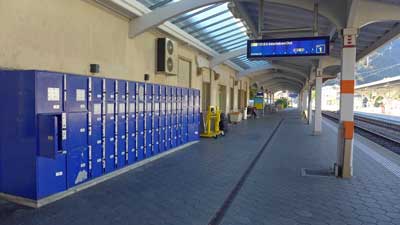
If you buy the Saver Day Pass at least 21 days in advance (and up to 60 days in advance) the 2023 cost is:
- 2nd Class (with Half Fare Card): CHF29
- 1st Class (with Half Fare Card): CHF82
- 2nd Class (with no Half Fare Card): CHF52
- 1st Class (with no Half Fare Card): CHF97
Once you research the normal cost of Swiss train fares you’ll see that the above prices are a very good deal for anyone riding more than 150 kilometers or so in a day. If you are just going, for example, from Zurich to Lucerne or Interlaken on a day, it’ll be cheaper to just buy that ticket individually. But if you are going from Geneva or Montreux to Interlaken or Lucerne then the Saver Day Pass will be much cheaper. Better still, you can use a Saver Day Pass to go from Interlaken to Geneva and back on the same day on the Goldenpass line and returning on the faster train through Bern, and it will still all be included for free.
If you don’t buy a Saver Day Pass at least 14 days in advance it’s more expensive, and if you only buy 1 to 3 days in advance it’s VERY expensive, so the key is to buy early. This is all confusing, but the Saver Day Pass should be a great option for many people only in Switzerland for one to three days.
Popular Swiss panorama scenic trains
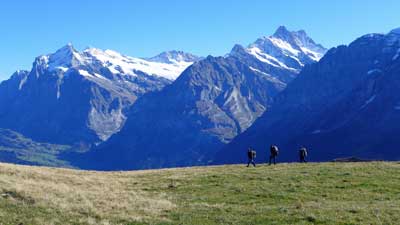
- Glacier Express
- Route: Zermatt to St. Moritz
- Train type: Panorama
- Journey time: 8 hours 3 minutes
- Distance: 291km
- 1st Class fare: CHF272
- 2nd Class fare: CHF159
- Compulsory seat reservation fee: CHF44 or 49
- Supplement for Swiss Pass holders: 13 to 33 for panorama carriage
- Bernina Express
- Route: Chur to Tirano and Lugano
- Train type: Panorama and bus
- Journey time: 4 hours 13 minutes and 3 hours 10 minutes
- Distance: 148km and 90km
- 1st Class fare: CHF113
- 2nd Class fare: CHF66
- Compulsory seat reservation fee: CHF32
- Supplement for Swiss Pass holders: 10 to 14 for panorama carriage
- GoldenPass Line
- Route: Lucerne to Montreaux
- Train type: Panorama
- Journey time: 5 hours 8 minutes
- Distance: 191 km
- Prestige Class fare: CHF131
- 1st Class fare: CHF96
- 2nd Class fare: CHF56
- Supplement for Swiss Pass holders: 8 to 15 for panorama carriage
- Gotthard Panorama Express (formerly Wilhelm Tell Express)
- Route: Lugano or Locarno to Lucerne
- Train type: Panorama and boat
- Journey time: 5 hours 21 minutes
- Distance: 182 km
- 1st Class fare: CHF164
- 2nd Class fare: CHF135
- Supplement for Swiss Pass holders: 39 to 49 for panorama carriage
- Swiss Chocolate Train
- Route: Montreux to Broc round trip
- Train type: Panorama or First Class
- Journey time: X hours X minutes
- Distance: 82 km
- 1st Class fare: CHF99
- 2nd Class fare: 89
- Supplement for Swiss Pass holders: 39
Popular Swiss scenic and theme trains
The scenic trains below are also extremely popular as sightseeing journeys rather than just as transportation, but can be used as both.
- Jungfraujoch round trip
- Route: Interlaken to Jungfraujoch
- Train type: special mountain train
- Journey time: 4 hours 41 minutes, round trip, plus time on top
- Distance: 73 km
- 1st Class fare: N/A
- 2nd Class fare: CHF224
- Supplement for Swiss Pass holders: 147 (so, a saving of CHF77)
- Gornergrat Railway
- Route: Gornergrat Railway
- Train type: Cog railway
- Journey time: 44 minutes return
- Distance: 10 km
- 1st Class fare: N/A
- 2nd Class fare: CHF90
- Supplement for Swiss Pass holders: 45
- Rigi round trip
- Route: Lucerne to Rigi
- Train type: Cog railway
- Journey time: 3 hours 25 minutes, plus time at the top
- Distance: 58 km
- 2nd Class fare: CHF78
- Supplement for Swiss Pass holders: None (this one is free with the pass)
- Mt Rigi Excursion (one-way and walk down)
- Route: Lucerne to Mt Rigi
- Train type: cogwheel train and/or cable car
- Journey time: 45 minutes up
- 1st Class fare: N/A
- 2nd Class fare: 49
- Supplement for Swiss Pass holders: 0
- Lotschberg Mountain Route and Centrovalli
- Route: Bern to Locarno
- Train type: Narrow gauge
- Journey time: 4 hours 40 minutes
- Distance: 212 km
- 1st Class fare: CHF158
- 2nd Class fare: CHF90
- Supplement for Swiss Pass holders: 5
- Jura round trip (Watchmaking Tour)
- Route: Neuchatel through Jura
- Train type: Regular
- Journey time: 3 hours 0 minutes
- Distance: 143 km
- 1st Class fare: CHF168
- 2nd Class fare: CHF108
- Supplement for Swiss Pass holders: 0
- Pre-Alpine Express
- Route: St. Gallen to Lucerne
- Train type: Regular
- Journey time: 2 hours 15 minutes
- Distance: 146 km
- 1st Class fare: CHF83
- 2nd Class fare: CHF47
- Supplement for Swiss Pass holders: 0
- Jura Foot Line
- Route: Basel to Geneva
- Train type: Regular
- Journey time: 2 hours 40 minutes
- Distance: 248 km
- 1st Class fare: CHF132
- 2nd Class fare: CHF75
- Supplement for Swiss Pass holders: 0
Popular Switzerland cable car rides
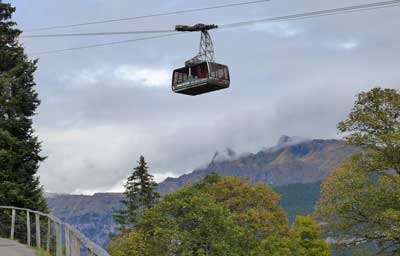
- Schilthorn
- Route: Stechelberg (Lauterbrunnen) to Schilthorn
- Train type: cable car
- Journey time: 1 hour
- 2nd Class fare: CHF108
- Supplement for Swiss Pass holders: 54
- Engelberg to Mt. Titlis cable car
- Route: Engelberg to Mt. Titlis
- Train type: cable car
- 2nd Class fare: CHF96
- Supplement for Swiss Pass holders: 46
The Swiss Travel Pass also includes free museum admission, but…
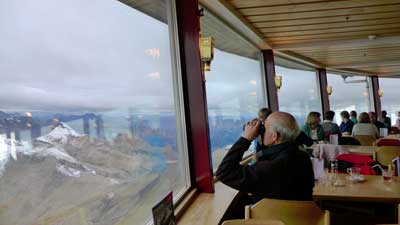
The problem is that the museums are only free on valid travel days, and almost no one would visit more than one or two museums with a Swiss Travel Pass. The trains and cable cars are so expensive that the pass gives very good value to cover those, so you don’t want to waste precious sightseeing time walking through a museum that only costs CHF10 anyway.
In other words, calculate the value of a Swiss Travel Pass on the travel savings only, and if you visit a museum here or there, then great. Most people are better off trying to squeeze in an additional train ride each day, and ignoring the museums. Switzerland is all about the outdoor scenery. As nice as the museums may be, they are not why you are there.
The pass includes free public transport in most Swiss cities
Similar to the free museum part of the offer, it’s best to ignore or minimize the value of free public transportation. It could be helpful in Zurich, but in most other Swiss tourist towns you won’t need much public transport. In fact, in Interlaken, each hotel or hostel guest automatically gets a card for free public transportation within the town (including between the two train stations).
So you might use a ride or two each day on public transport, but that won’t add up to much in terms of value of your Swiss Travel Pass.

Hi Roger,
Point to Point ticket from Bern to Geneva will cost me around 56CHF, and Saver day pass will cost me 70 CHF.
Kindly suggest if Saver day pass is worth.
Regards
Santhosh
Santhosh,
The Saver Day Pass is a new product and this is the first I’ve heard of it. It looks very interesting and could be helpful for many people. It appears to be an unlimited travel pass for one day, so it’s really a matter of if you’ll take more train rides other than just Bern to Geneva. I’d probably be inclined to get the Saver Day Pass if I had enough remaining time in the day to use it after arriving in Geneva. The Swiss trains are very comfortable and famously punctual, so you could just ride around a bit more if you’ve got an hour or two available. Thanks for pointing this out. -Roger
Hi Roger,
Thanks for your recommendations.
We will try to alter the itinerary and see if we can utilize super saver day pass or point to point tickets.
Regards
Santhosh
Hi Roger,
Thanks for your quick reply.
I am staying in Swiss for 5 days, and Swiss day pass is available i variants 3, 4, and 8 days. So if I choose 4 day pass then I am thinking how to travel on 5th day, or am I missing anything here.
Thanks
Santhosh
Santhosh,
This is a tricky one if you are doing 5 full sightseeing days and you don’t want to buy a 8-day pass. It might be best to buy a 4-day Flex Pass and use it on your 4 most expensive days. You might even move your itinerary around a bit so you have a cheaper day in there. If you want to do all of these things then a Half Fare Card might end up being your best bet in the long run. You’ll have to add up the costs to know for sure. I am not aware of any other tricks you could use. Best of luck. -Roger
HI Roger,
Thanks for your reply.
After going through forums again and again, I felt it is best to travel around Interlaken the most and skip Zermatt for now.
I have tried to alter the itinerary. Kindly suggest if it is a wise itinerary.
26-Apr: Land in Geneva, Bert sight seeing, Lake thun boat ride to Interlaken West and overnight stay in Beatenberg
27-Apr: Beatenberg to Lauterbrunnen, Grimmelwald, Murren & Schilthorn day trip, stay in beatenberg
28-Apr: Wengen, Grindelwld, & Harder Kulm. Walk around Interlaken, overnight stay in Beatenberg.
29-Apr: Lake Lucerne, Mt. Rigi, Engelberg, and Mt. Titlis.
Overnight stay in Beatenberg.
30-Apr: Beatenberg to Montreux, Vevey, Lake geneva, Fly from Geneva in the evening.
Would you still suggest Swiss Travel pass without Zermatt, if yes kindly suggest how to plan booking for Day 5.
Regards
Santhosh
Santhosh,
I still think a Swiss Travel Pass would be your best value even without Zermatt. As mentioned, since it fully includes Mt Rigi and Schilthorn along with all of your train rides and boat rides, I think it will pay for itself and save more than the Half Fare Card. You’d need to add each thing up to be sure, but that’s my best guess. The train to Montreux on its own is also fairly expensive, so the pass would save a lot. I’m not sure what you mean about booking Day 5. With a Swiss Travel Pass you can just climb aboard and show the pass to the ticket person as they come by. You can do the Goldenpass to Montreux, which goes through a gorgeous valley instead of using the faster trains through Bern. If you want to book a panoramic carriage for the Goldenpass you can do that for a small supplement on the Goldenpass website. Let me know if you have any other questions. -Roger
Roger,
I have been going back and forth on both of your sites while planning our trip to Switzerland this spring. The information you provide is really indispensable.
the following is our itinerary:
April 24 Arrive in Basel, train to Lucerne (hotel in Stansstad)
April 25 depart for Murren, spend two nights
april 27 Depart for interlaken, one night
april 28 Depart for Bern, one night
April 29 Depart for Geneva; depart from Geneva Airport
I found out the the cable car for Schilton that week is out for maintenance. Not sure if a swiss pass would still make sense. What you think?
Tony G,
I’m glad that you found this information helpful. That is a real shame about Schilthorn being out for maintenance that week, especially since I recently discovered that it’s now fully included for Swiss Travel Pass holders instead of just a 50% discount. With that in mind it’s an even easier choice for the Half Fare Card. You are taking enough train rides that the Half Fare Card will more than pay for itself, and of course you’ll also be able to use it on cable cars and boat rides that aren’t on your list. Have a great trip. -Roger
Hello Roger,
First thing first….awesome blog. Very informative. Thanks for sharing with us.
After reading your blogs have planned my swiss trip as below.But still under confusion in choosing Swiss Travel pass or Half fare card where I need your expert advice. So kindly help to check my itinerary below and share your inputs.
Lucerne 3 days:
Day1: Milan to Lucerne via Train and will reach Lucerne around 2PM.Visit Mt. Pilatus on the same day.
Day2: Complete day for Mt. Titlis
Day3: Stanserhorn & Mount Rigi
Kandersteg 1 day:
Day4: Lucerne – Interlaken Ost – Kandersteg. Oeschinensee Lake and mountain hike. Overnight stay in Berghotel Oeschinensee
Gimmelwald 2 days:
Day5: Kandersteg – Gimmelwald. Village tour and visit to Schilthorn.
Day6: Complete day for Jungfraujoch visit.
Near Zermatt 1 day:
Day7: Gimmelwald – Zermatt.Visit to Gornergrat & Riffelsee. Overnight stay at Zeneggen.
Day8: Zeneggen – Milan(Italy)
Questions:
1.For the above itinerary do we(group of 4 adults) need 8 day swiss travel pass or Half Fare Card?
2.Feedback and suggestions on my Itinerary(anything to add or remove).
3.How to avail the pass(travel pass or half fare card) for travelling to and from Milan.
Thanks & Regards
Krishna
Krishna,
It looks like you’ve got 8 busy days planned and I think the Swiss Travel Pass will be the best value for your group. Since it fully covers Mt Rigi and also Schilthorn (I only just found out about this), I’m pretty sure it’ll pay for itself and be better value than the Half Fare Card. For visits of only 3 or 4 days it can sometimes be challenging to get enough value out of the full Swiss Travel Pass, but if you are staying 8 days it’s not much more expensive so it’s easier to get value with that many train rides plus Rigi and Schilthorn.
Your itinerary looks quite good and it doesn’t look like you are trying to do too much on any given day. I’m not familiar with everything on your list, but I know most of them and it looks like you are covering most of the best sights. I’d say the only important thing to mention is that the weather on those peaks can be cloudy or foggy any day of the year, so it’s usually wise to allow some flexibility in your schedule. In other words, if the weather is clear up top it’s good to go up as quickly as possible, but if it’s foggy on top when you were planning on going you can do something else such as visit Bern for half a day.
I just checked about buying a ticket to Milan on the sbb.ch website and it doesn’t look like they offer a discount for Swiss Travel Pass holders on that route. You actually have to take a bus from Zeneggen to another bus to reach Visp, and there you board the train to Milan. In theory you could do the first stop of that journey for free so you could do that with your Pass and just buy a ticket from Brig, which is the last stop in Switzerland on that route. It looks like you’d save about CHF11 each person by doing that. If you had a Half Fare Card you would only get that 50% discount on the portion of the journey within Switzerland, so the savings with that would be even smaller. Have a wonderful trip and let me know if you have any other questions. -Roger
Hi,
We are 4 adults & 4 children..also, we are landing at Geneva airport on 24th may..already, bookings are made and cannot be cancelled..so we are staying for 2 nights in Geneva and 2 nights in Interlaken..shall we buy the swiss travel pass or any other pass?
We will land in Geneva at 11am..
Day 1: in and around Geneva or chocolate and cheese factory..please suggest
Day 2: lausanne and Montreux..chillon castle and return back by boat..
Day 3: Geneva to Zurich and back to interlaken just a train ride today
Day 4: jungfraujoch and then leave for basel ..or stay in Interlaken??
Day 5: basel to paris
Sapana Jain,
I’m not sure about specific cheese and chocolate factories in Geneva, but they should be easy to find on Google.
It looks like you’ll be doing quite a few train journeys, but none that are extremely expensive, so I think the Half Fare Card should be the best value. Also, the HFC gives you are 50% discount on Jungfraujoch compared to only a 25% discount with a Swiss Travel Pass. Best of all you can also get a free Swiss Family Card, so the children will be able to do all of these things for free with an adult who pays only half price.
I think on that last day I would stay in the Interlaken area if you can. Not only is it the most beautiful part of Switzerland, but Basel is kind of dull and a hotel there would probably be more expensive and less pleasant. Let me know if you have any other questions. -Roger
Hi Roger,
Thanks for your wonderful blog. Could you please help me with the following itinerary and suggest us if we should take swiss pass or HFC.
I am with my wife from April 26-30, the following is what I have planned:
26-Apr: Land in Geneva and go straight to Beatenberg, Schilthorn in evening. Overnight stay in Beatenberg
27-Apr: Beatenberg to Jungrauch day trip, Lake thun boat ride, stay in beatenberg
28-Apr Lake Lucerne, Engelberg, Mt. Titlis/Pilatus, Mt. Rigi.. Would it be possible in a single day, overnight stay in Beatenberg.
29-Apr: Beatenberg to Zermatt, Mattehorn, Overnight stay in Beatenberg.
30-Apr: Beatenberg to Montreux, Vevey, Lake geneva, Fly from Geneva in the evening.
Please could you let me know if this is a wise itinerary considering the rain during last week of April.
Thanks
Santhosh
Santhosh,
It looks like you’ve got quite a bit planned during your 5 days in Switzerland. As for 28-April, if you start early you could do two of the peaks in the same day, but I don’t think doing three of them would be possible and even if it were possible it wouldn’t be fun to rush around like that. You can do Mt Rigi as part of your Lucerne cruise, and you could do Titlis or Pilatus before or after that.
You have quite a few train rides planned and that is the main factor in the Swiss Travel Pass being the better value. I also recently learned that Schilthorn is now 100% covered by the Swiss Travel Pass where it used to be a 50% discount. With that in mind I’d say it’s clear that the Swiss Travel Pass is your best option over the Half Fare Card.
Also, you mention possible rain, and the weather is always somewhat unpredictable at the tops of those mountains. Especially the highest ones (Jungfrau and Schilthorn) it’s often clear in the morning and cloudy or foggy in the afternoon, and sometimes the other way around. Even in summer it can get so those peaks are basically inside the clouds, and when it’s like that there is no point in going up. It’s best to check the webcams and weather forecasts just before you go up, and try to keep you schedule a bit flexible.
Have a great trip and let me know if you have any other questions. -Roger
Hello Roger,
As I was making itinerary for my Swiss trip in June, I came across you website out of many and thought your knowledge is very helpful. Thanks so much for sharing it with us.
I really need your advice as I am still unsure if I should buy a Swiss Travel Pass, Half Fare card or just buy all tickets individually as it might turn out to be cheaper. the thing is I cannot check the fares online for the trains as I believe they are only open 1 month before the departure. But I do know the prices for the cable cars as they are available on the web.
Below is my scheduled itinerary:
12 June Arrive in Zurich
14 June Train from Zurich to Luzern
14 June Return cogwheel to Mt Rigi
15 June Luzern to Engleberg
Engleberg to Mt Titlis return (cable car)
Engleberg to Bern
16 June Bern to Interlaken
17 June Interlaken to Lauterbrunnen
Lauterbrunnen to Schilthorn (return cable car)
18 June Lauterbrunnen to Grindelwald
Grindelwald to Jungfraujoch
Jungfraujoch to Lauterbrunnen
19 June Lauterbrunner to Zermatt
Zermatt to Gornergrat (return cogwheel)
Then on 20 June I am still unsure how to get to Milan from Zermatt since my plane leaves from Milan back to Australia.
I have some questions which I need your expertise:
1. I know most of normal trains from city to city are free with Travel Pass. But, how does it work? Do I still need to reserve the seat, or do I just board the train by showing my travel pass only, or do still I need to pre-order free ticket before my departure date?
2. Please correct me if I am wrong, I think the only train journeys which are not free by travel pass are trains from Interlaken to Lauterbrunnen, Lauterbrunnen to Grindelwald, Grindelwald to Jungfraujoch, Jungfraujoch to Lauterbrunnen and train from Lauterbrunnen to Zermatt might be covered some parts only. Others like cable car and cogwheel I know I will get discounts and the Schilthorn cable car is free with travel pass.
Question is if I buy the mountain train from Lauterbrunnen to Jungfraujoch return, does it allow me to get off at Kleine Scheidegg, so I can buy return train from Kleine Scheidegg to Grindelwald?
3. Does the cable car from Lauterbrunnen to Schilthorn allow us to get off at Gimmelwald, or do we need to buy separate cable car ticket for that?
And, could you please help to recommend the fastest way to reach Milan from Zermatt? Is it worth the time and money to visit Lugano on my way to Milan?
It’s hard for me to figure out which travel pass to buy as I could not calculate the fare of my individual train journey right now. But, based on the itinerary I provided you above, do you think it’s best for me to buy the 8-days continuous Travel Pass, Half Fare Card or buying individually.
Thank you so much for your help first of all, and sorry if my message ends up really long.
Cheers,
Vivi
Vivi,
I’m glad you find this information helpful. As for Swiss train fares, they are the same no matter when you buy them for domestic tickets, so you can check any date and it will be the same as your actual dates.
1. With a Swiss Travel Pass you can simply climb on board and find an empty seat. Seats that are reserved for someone else will have a little card on them showing the cities from and to that seat is reserved from, but that is only common in the mornings going between big cities such as Zurich to Geneva. If you board after 9:30am or so you’ll usually find plenty of empty seats. When the conductor or ticket person eventually comes by to check tickets, you just show them your valid pass and they will stamp it with that date if that’s the first time you used it that day. It sounds too good to be true, but that’s the way it works.
2. Actually, all of those trains are free with the Swiss Travel Pass, but they are only offered at a discount with a Eurail Pass or any other similar pass. So with the Swiss Travel Pass you can go all the way up from Interlaken to Schilthorn for free. For Jungfraujoch you only get a 25% discount with the Swiss Travel Pass (vs a 50% discount with the Half Fare Card). I believe you could split your trip up and stop in Kleine Scheidegg, but I’m not sure. It’s a very small place and they may only sell tickets going all the way up and then back. Sorry I’m not sure about this one.
3. I discuss all the steps from Interlaken to Schilthorn in my main article on where to go in Switzerland. But yes, Gimmelwald is the first stop on the cable car up the mountain from Stechelberg. From there you cross the platform and board another cable car waiting there for the 5-minute ride up to Murren. From Murren you walk forward a bit to yet another cable car, and there is one more after that that takes you to Schilthorn. My recommendation is to go all the way up first and then on the way down get off in Murren for a look around and then a 15-minute walk down a paved path that takes you into Gimmelwald and ends at the cable car stop. As long as the weather is nice it’s an amazing and easy walk.
From Zermatt to Milan there is only one way to go. You take the private rail line from Zermatt back to the town of Brig (1 hour 24 minute), and there you change to the train to Milan that takes a bit under 2 hours. The train from Brig to Milan doesn’t go through Lugano, and you’d have to go way out of your way to get the train that does. After Switzerland I think you’ll be overloaded with amazing scenery, so Lugano wouldn’t have been a big deal.
My best guess is that the Swiss Travel Pass will be your best value, since you are doing so many train rides and staying that long. Let me know if you have any other questions. -Roger
Hello!
We are 4 adults and 2 children with the following itinerary:
April 7: Bellinzona – Zurich
April 8: Zurich
April 9: Zurich – Sargans (and back)
April 10: Zurich – Lucerne – Berne
April 11: Berne
April 12: Bern – Schilthorn
April 13: Bern – Zermatt – Bern
April 14: Bern – Basel
In this case, is the swiss rail pass worth it? We will be in Switzerland for 8 days. We plan on doing day trips almost every day, so we will be needing public transport + train tickets.
Thoughts?
Also, should I buy e-tickets online or will I be able to purchase a rail pass in Bellinzona? (We are stopping there on our way to Zurich from Milan)
Are first class tickets worth it?
Thank you,
Tavia
Tavia,
I would think that a Swiss Travel Pass would be good value on a trip like this, but I’d need to add up each individual fare to be sure. Of course the other option is the Half Fare Card, but with all of these train trips I’d think that the Pass would save you more. You can buy a Swiss Travel Pass online and print it at home, and then have it validated on your first trip within the country. You can buy Swiss Travel Passes at any major train station in Switzerland, but I’m not sure about the station in Bellinzona.
As for First Class, the tickets generally cost 50% more than Second Class and they are wider with more legroom. First Class has 3 seats across and Second has 4 seats across, and First Class is usually less crowded (unless you take a morning train between cities). On the other hand, the Swiss trains are among the nicest in Europe and Second Class provides enough legroom for almost anyone. I’m 6’3″ (192 cm) and also a bigger guy, and Second Class seats are comfortable to me. I prefer First Class though and sometimes spring for it on certain trains.
The last thing I’ll mention is I definitely wouldn’t recommend basing yourself in big cities if you can avoid it. I discuss it in greater length near the top of my main article on where to go in Switzerland. The short version is that the cities (and Zurich especially) are VERY expensive for hotels and restaurants, and they aren’t nearly as charming or convenient as towns such as Interlaken and Lucerne, where you also get more hotel for your money. Another way to say it is that Switzerland’s cities are below average compared to Europe’s great cities, but the Alpine and lake scenery is arguably the best in all of Europe, so it’s better to spend most of your time enjoying the scenery and avoiding the expensive cities. Let me know if you have any other questions. -Roger